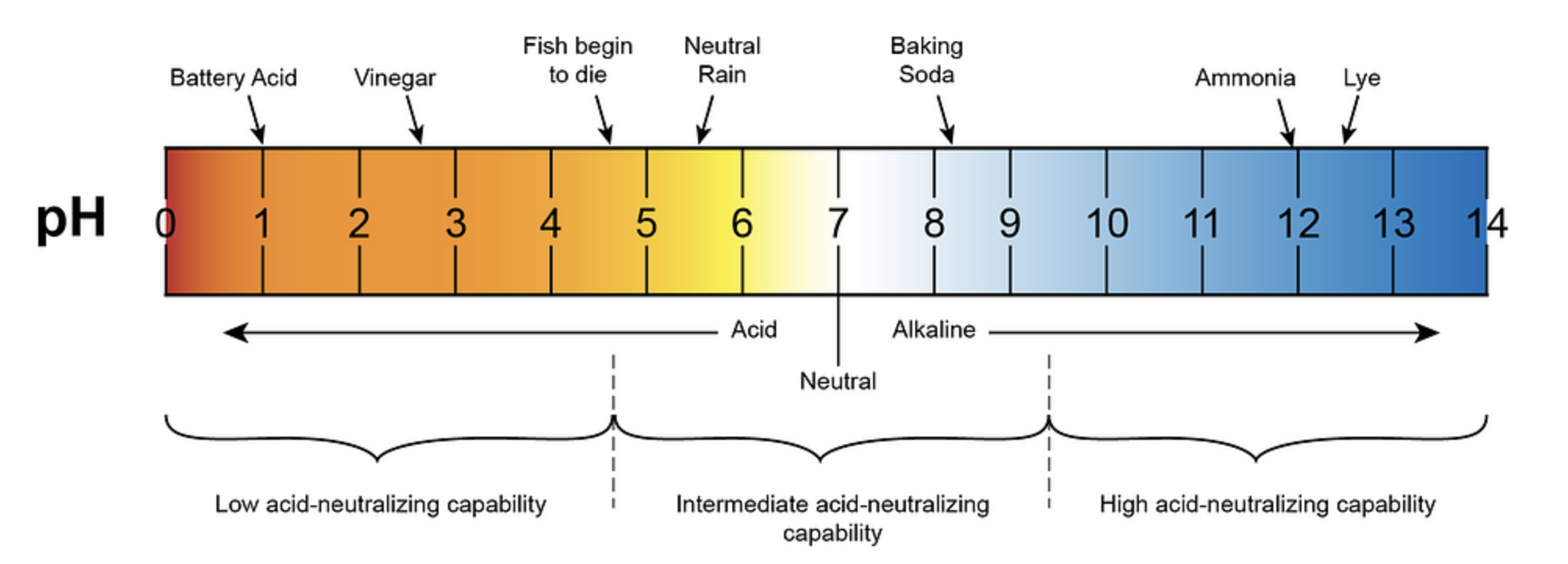The pH of a weak acid solution is a crucial factor in understanding the chemical equilibrium and the behavior of the solution. Weak acids only partially dissociate in aqueous solutions, forming an equilibrium between the acid, water, and the resulting conjugate base. This equilibrium plays a significant role in determining the pH of the solution, which is typically less than 7 but higher than the pH of a strong acid.
Understanding the Equilibrium
When a weak acid, such as acetic acid (CH3COOH), is dissolved in water, the following equilibrium reaction occurs:
CH3COOH + H2O ⇌ CH3COO- + H3O+
In this reaction, the weak acid (CH3COOH) partially dissociates, forming the conjugate base (CH3COO-) and hydronium ions (H3O+). The extent of dissociation is determined by the acid dissociation constant (Ka) of the weak acid.
The pH of the solution is directly related to the concentration of hydronium ions (H3O+) in the solution. The pH can be calculated using the formula:
pH = -log[H3O+]
As the concentration of hydronium ions decreases, the pH of the solution increases, and vice versa.
Factors Affecting the pH of Weak Acid and Water Solutions
Several factors can influence the pH of a weak acid and water solution:
-
Concentration of the Weak Acid: The higher the concentration of the weak acid, the lower the pH of the solution. This is because the higher concentration of the weak acid leads to a higher concentration of hydronium ions in the solution.
-
Acid Dissociation Constant (Ka): The acid dissociation constant (Ka) of the weak acid determines the extent of dissociation and, consequently, the pH of the solution. Weak acids with a higher Ka value will have a lower pH compared to those with a lower Ka value.
-
Dilution: When a weak acid solution is diluted with water, the pH of the solution increases. This is because the concentration of hydronium ions decreases, even though the concentration of the weak acid remains the same.
-
Presence of Contaminants and Chemicals: The presence of other substances, such as salts, buffers, or other chemicals, can affect the pH of the weak acid and water solution. These substances can interact with the weak acid or the hydronium ions, altering the equilibrium and the resulting pH.
Calculating the pH of Weak Acid and Water Solutions
To calculate the pH of a weak acid and water solution, you can use the following methods:
-
Direct Calculation: Using the formula pH = -log[H3O+], you can calculate the pH by determining the concentration of hydronium ions in the solution. This can be done by considering the initial concentration of the weak acid, the acid dissociation constant (Ka), and the equilibrium concentrations of the reactants and products.
-
Henderson-Hasselbalch Equation: The Henderson-Hasselbalch equation is a useful tool for calculating the pH of weak acid and water solutions, especially in the case of buffer solutions. The equation is:
pH = pKa + log([A-]/[HA])
where pKa is the negative logarithm of the acid dissociation constant (Ka), [A-] is the concentration of the conjugate base, and [HA] is the concentration of the weak acid.
By using these methods, you can accurately determine the pH of a weak acid and water solution, taking into account the various factors that influence the equilibrium and the resulting pH.
Balancing the pH of Weak Acid and Water Solutions
To balance the pH of a weak acid and water solution, you can add a strong base or a strong acid to neutralize the excess H+ or OH- ions, respectively. The amount of base or acid needed can be calculated using the initial concentration of the weak acid, the acid dissociation constant (Ka), and the desired pH.
For example, to increase the pH of a weak acid solution, you can add a strong base, such as sodium hydroxide (NaOH). The strong base will react with the excess H+ ions, forming a salt and water, and shifting the equilibrium towards a higher pH.
Conclusion
The pH of a weak acid and water solution is a complex topic that involves understanding the equilibrium between the weak acid, water, and the resulting conjugate base. By considering factors such as the concentration of the weak acid, the acid dissociation constant, and the presence of contaminants and chemicals, you can accurately calculate and balance the pH of these solutions. Understanding the principles of weak acid and water solutions is crucial in various fields, including chemistry, biology, and environmental science.

